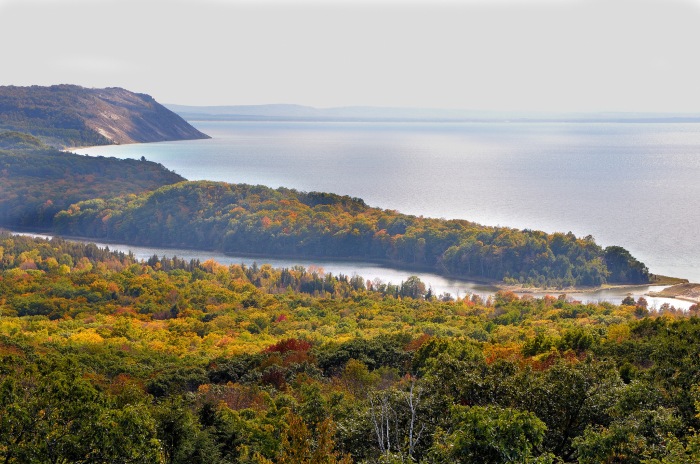
Wreckage of the Rising Sun, photo by U.S. Coast Guard Air Station Traverse City
Yesterday the U.S. Coast Guard Air Station Traverse City shared a collection of photos from the Manitou Passage Underwater Preserve, writing”
We can call it “Shipwreck Sunday” – With Lake Michigan ice gone for the season the crystal clear, deep blue waters of northern Michigan are back (albeit still VERY VERY cold at an average of 38 degrees).
During a routine patrol this past Friday, an aircrew captured these photos of a handful of the many shipwrecks along the Lake Michigan shoreline. These photos were taken near Sleeping Bear Point northeast along the shoreline to Leland, Michigan up to Northport.
Information on the shipwrecks is scarce, please post if you recognize any of the photographed sites.
View the Coast Guard’s photo bigger and click through for photos of other wrecks including the James McBride. Definitely follow them on Facebook for more cool shots of Michigan’s coastline from above!
Regarding the Rising Sun, the Leelanau Enterprise shares Leelanau historian George Weeks account of the wreck that includes a photo of the grounded Sun:
In October 1917, the Rising Sun went to High Island to get potatoes, rutabagas and lumber to take to Benton Harbor. On 29 October, in one of the early-season snowstorms that sweep the Lakes, the Rising Sun went aground at Pyramid Point. Lifeboats were launched and all thirty-two people aboard eventually saved.
As was often the case with Great Lakes wrecks, shoreline residents, not the U.S. Coast Guard, were the first to provide assistance. In this case, Fred Baker, summoned in the night by survivors pounding at the door of his home atop the Port Oneida bluff, was the first to respond. He hastened to his barn, quickly unloaded 60 bushels of potatoes that were on his wagon, hitched his team, and went down to the beach. The survivors, including a woman found unconscious on the beach, were brought to Baker’s house. (By the 1990s, Baker’s daughter, Lucille, who was four years old at the time of the wreck, was still residing at Port Oneida, the wife of Jack Barratt, great grandson of Port Oneida settler Carsten Burfiend.)
The Coast Guard beach rescue rig arrived from Glen Haven, pulled by two teams of horses borrowed from D.H. Day. A man who was asleep when the others abandoned ship was rescued by the guardsmen.
Remains of the Rising Sun are visible from the shore on a clear day, and are popular for recreational divers. As with other wrecks, the remains are protected objects within the Manitou Passage Bottomland Preserve.
Read more about the Rising Sun, it’s caro and final voyage and the House of David that owned it from Chris Mills and see more shipwrecks on Michigan in Pictures.
Share Michigan in Pictures:










